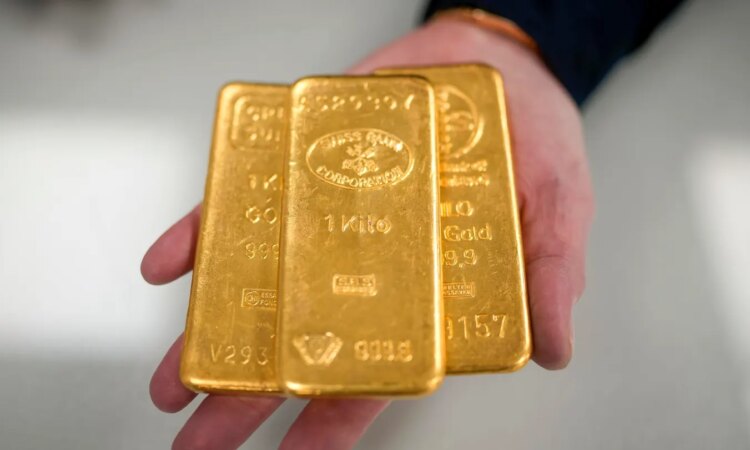
Photo by Christopher Furlong/Getty Images
Getty Images
This has been the timeless debate among investors — gold or silver? Both metals shine, both carry a long history, and both are expected to maintain their value when financial chaos ensues. But if you had to select one today, which would you prefer to have in your portfolio? Let’s examine some factual data along with market context. Additionally, see: What’s Next After MP Stock’s 5X Surge?
Gold has consistently been regarded as the quintessential safe haven — the metal individuals flock to during periods of rising inflation or stock market instability. It is also a preferred choice for central banks, which continue to accumulate gold as a reserve asset. Currently, gold is trading at near record prices, bolstered by persistent inflation and the anticipation of declining interest rates soon. Historically, gold has been a more stable choice between the two — less exhilarating, but also less nerve-wracking during economic downturns. In the last ten years, gold has had an annualized return of approximately 7.7%, while silver’s return is around 6%. If we look further back — to the 1960s — gold has appreciated over 9,000%, whereas silver has risen by 4,000%. Quite impressive for a lustrous yellow mineral.
Silver, however, operates in a different arena. It serves as both a precious metal and an industrial heavyweight. Silver is used in various applications, from solar panels and electric vehicles to electronics and medical instruments. This dual nature makes it somewhat of a double agent — it thrives when the economy is strong, but it can also take a significant hit during economic slowdowns. Silver’s smaller market size and industrial ties make it considerably more volatile. When conditions are favorable, it can soar — as seen in 2020 when silver jumped about 45% while gold advanced around 30%. Conversely, when market sentiment declines, silver often drops twice as steeply. Robust demand is one of the elements we consider in the High-Quality portfolio, which has outperformed the S&P 500, yielding returns exceeding 105% since its inception.
Another perspective is provided by the gold-to-silver ratio — indicating how many ounces of silver are needed to purchase an ounce of gold. In ancient Rome, this ratio was around 12-to-1. Over recent decades, it has typically averaged closer to 60-to-1. Currently, that ratio sits around 85–90. When this ratio becomes particularly high, it usually signifies that silver is undervalued compared to gold — prompting some investors to increase their silver holdings. However, timing this strategy accurately is more challenging than it seems.
From a practical viewpoint, gold is easier to store, transport, and sell. A few gold coins can possess substantial value, whereas you’d require a significant amount of silver to equal that value. Nevertheless, silver is much more accessible for new investors, as a few hundred dollars can get you started. Psychologically, there is also a sense of satisfaction in possessing several pieces of authentic, tangible metal rather than just one tiny coin.
So, which is the superior option? Truthfully, it depends on your objectives. If your aim is to safeguard wealth and ensure peaceful sleep at night, gold is the more stable choice. It tends to perform better during market downturns and currency fluctuations. If you’re seeking higher potential returns and don’t mind a more volatile journey, silver might shine even more brightly — particularly if the demand from sectors like clean energy and electronics continues to escalate.
Most astute investors tend to hold some of both — gold for stability and silver for potential. Consider it a dynamic duo for your portfolio: one brings tranquility, while the other adds thrill. In a world where inflation, technological changes, and global uncertainties continue to intersect, a combination of both metals may very well be the smartest strategy to mitigate risks — and to keep your portfolio gleaming no matter what challenges lie ahead.
If you desire upside with a smoother experience compared to an individual stock, think about the High Quality portfolio, which has outperformed the S&P, achieving over 105% returns since its creation.





